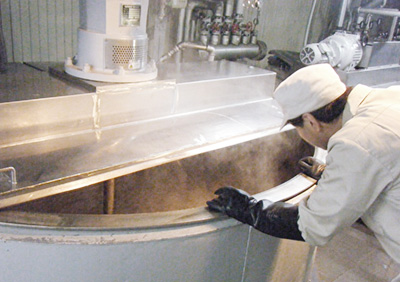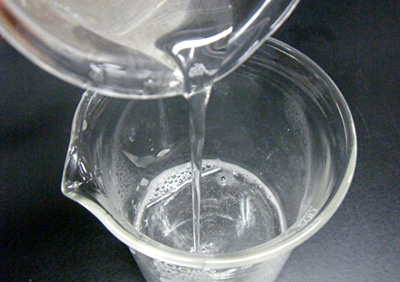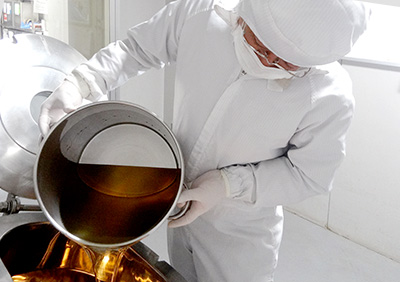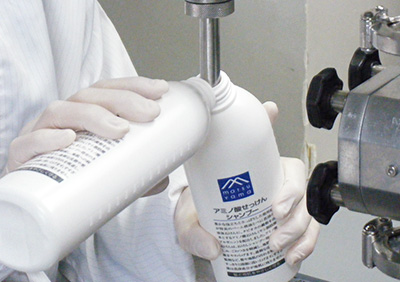-

"Kamadaki" heats the materials in a boiler rather than an actual pot. The oil and fat mix with the caustic potash (potassium hydroxide) in the pot, and give off reaction heat in the process of becoming soap. Reaction heat is a natural phenomenon and difficult to accurately quantify. The saponification process is watched closely, with constant monitoring of the heat applied to the pot, the reaction heat, the bubbling and the form.
-

Upon reaching boiling, the liquid soap contains 30% pure soap. If it is allowed to go any farther, the soap turns into gel, loses liquidity, and becomes more difficult to use. The appropriate concentration of soap differs according to the product's use.
-

We adjust soap concentration for each product, seeking to balance easiness on the skin, cleansing ability, lathering, and ease-of-use. Essential oils, plant extracts and other useful components are also added to products.
-

The liquid soap is filled into bottles and refill pouches, and the product is complete. This work requires only a few minutes. Each product is given a serial number, and the printing of the serial number is visually confirmed for each piece. Products are packaged in shrink wrap and dressing boxes to prevent improper opening and soiling. When packing is completed, the soap is ready for shipping. All that is left is to deliver it to you.
MANUFACTURING / Liquid soap

Liquid soap uses different oils and fats than solid soap because it must remain in liquid form even at low temperatures. The best fatty acid compositions for liquid soap come from plants. The pot boiling method uses the caustic potash (potassium hydroxide) for saponification.